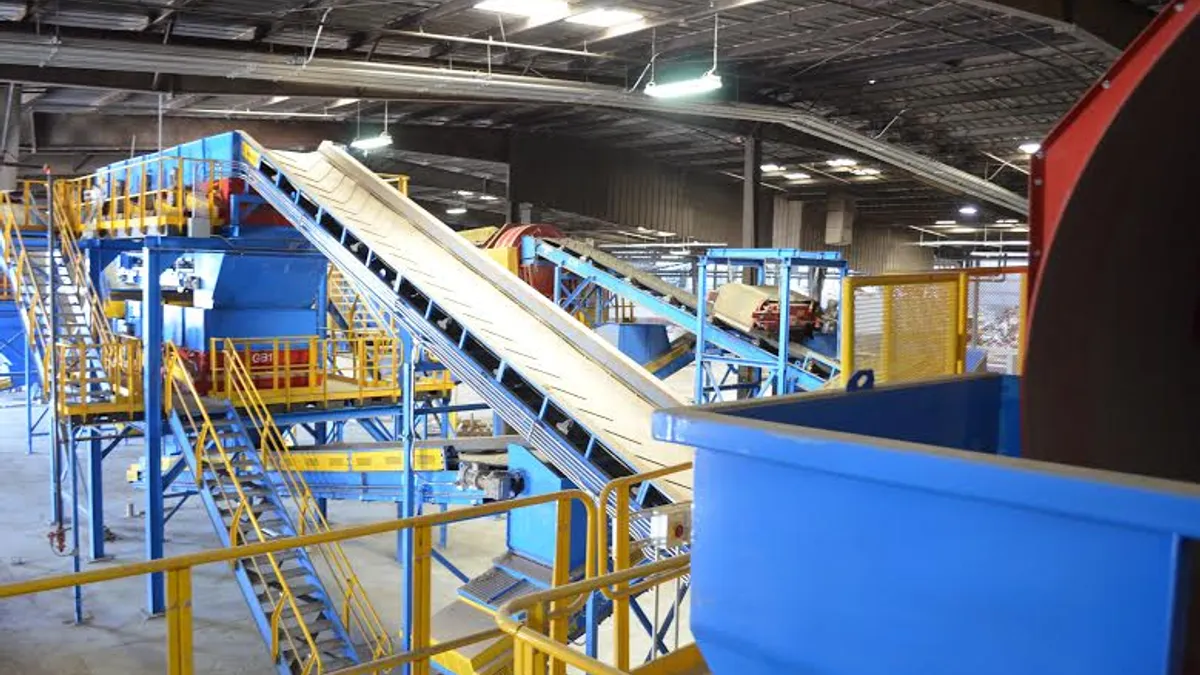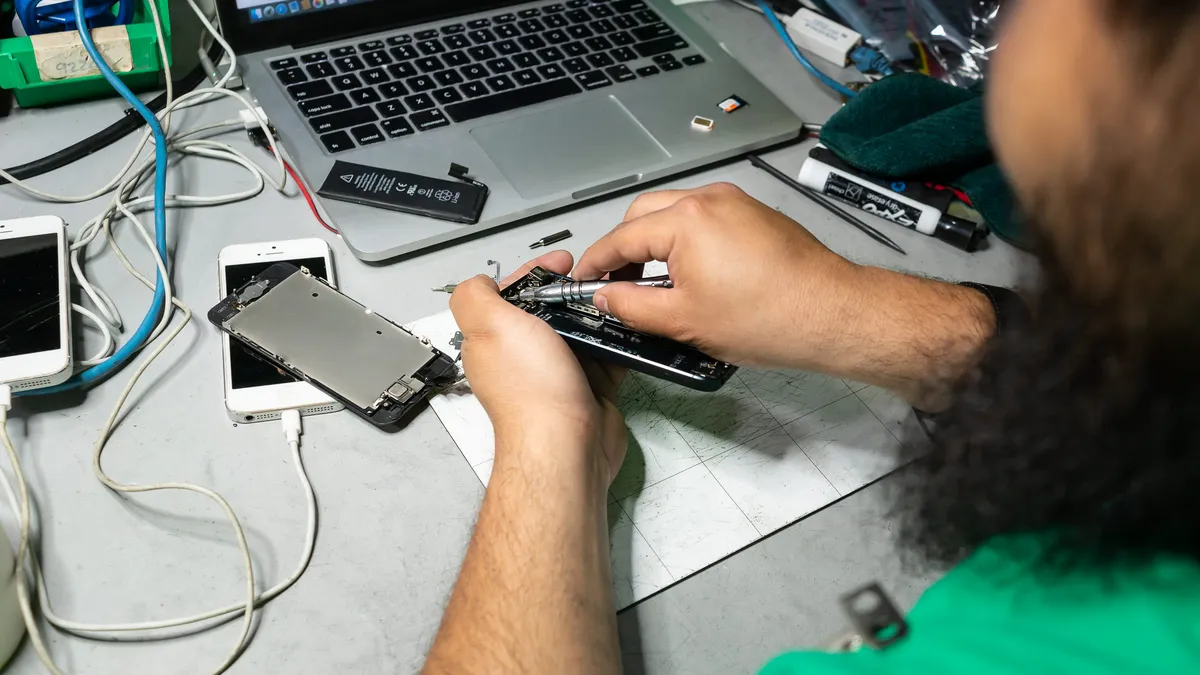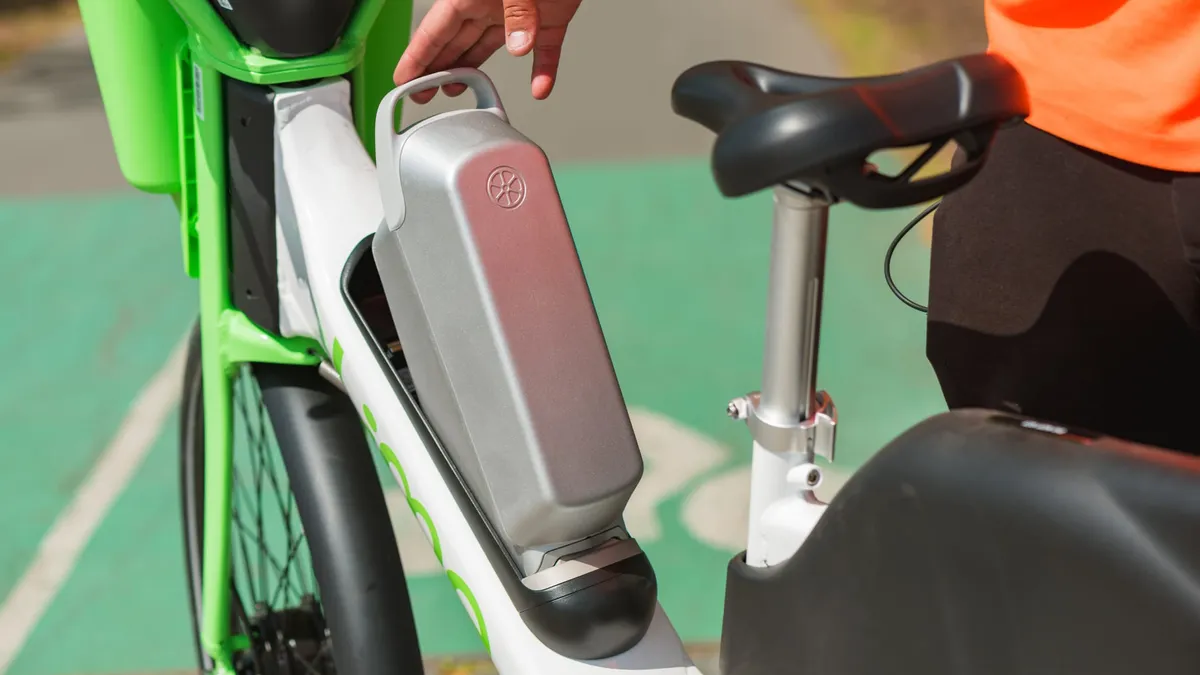The recycling industry’s challenges run deep: some mixed-waste streams contaminate good materials and clog plant equipment, costly and intensive human labor is required to deal with machinery issues, and a weakened commodities market forces already strapped municipalities to share financial risk.
But many industry experts claim the demand for recycling is still there, and in order to solve associated problems, a stronger infrastructure focused on technology may help to once again jumpstart recycling.
Some local governments and processors are banking on this, investing multimillions in technology that promises to more efficiently separate materials and increase recovery. Technology manufacturers say processors would spend less in the long run to find new incarnations for trash. And some businesses are starting to see results — from decreased residue rates, to a decreased need for manual sorting.
How Penn Waste benefited from new equipment
Just over a year ago, Penn Waste was processing 10 to 12 tons of recyclables an hour, but that figure tripled within months after they opened a 96,000-square-foot single-stream recycling center in York, PA — one of the largest in the nation. The new equipment made by Bulk Handling Systems (BHS) processes paperboard and cardboard, plastics numbers 1-7, aluminum and steel, food and beverage cartons, and even glass.
Three new screens allow cleaner outbound materials that were historically difficult to handle, like newspaper and glass. Glass had been their biggest hurdle, further complicated by paper.
"Shredded paper is not a problem until it’s wet. Then it sticks to everything, including glass, which is very hard to clean," said Penn Waste Director of Operations Kathy Masch.
Their new glass cleaning system blows out fine, light contaminants like paper. Their optical sorter, also part of the package, has bumped up plastics processing.
"It allowed us to shift manpower from sorting by hand to quality control, which results in a cleaner outbound commodity," said Masch.
In 2015, Penn Waste processed 96,351 tons of recyclables. This year, they expect to do more. They have no problems getting volume from residents in the 66 Pennsylvania municipalities they serve, 3,500 area commercial clients, and out-of-state haulers.
In fact Masch’s one recommendation to potential investors is, "Upsize your equipment. There is always more material, so buy the biggest you can afford."
What a high-tech production line might look like in a single-stream MRF
Typically, materials are loaded onto a conveyor belt, then manually pre-sorted to remove metals, large plastic pieces, and unusable waste. Remaining materials drop from a conveyor belt to the old corrugated containers (OCC) screen. Bigger cardboard items ride across the top of the screen while remaining materials drop through and travel to a fiber screen to be further sorted. Separated OCC is then pushed on a conveyor belt, dumped into a bailer, crushed, and tied.
Remaining containers, mainly plastic, continue to an optical sorter — a high-tech piece of equipment that reduces manual labor and enables staff to focus on quality control, said Rusty Angel of Machinex, which manufactures a MACH Hyspec system. For instance, a small MRF that may have four workers manually sorting PET can reduce to one worker to focus on pulling non-PET.
The optical sorter reads materials with a camera using infrared light waves. The camera sends the signal to blast out air, which ejects material from the stream and blows it onto another belt based on plastic type. Most optical sorters use near infrared technology (NIR), which sees a limited portion of the light spectrum. What differentiates the MACH Hyspec system is its ability to identify a broader spectrum of light waves and thus more plastics, especially beneficial for mixed-waste streams, said Angel.
"If you are only looking for #1-#7 plastics, NIR works. But short and medium waves help with processing multi–layered plastic types," he said.
Hyspec offers a more accurate read, said Angel, in that it has technology enabling more precise identification of dirty bottles and bottles with liquid inside that would otherwise have to be manually pulled. However, the technology comes at a price: a system processing 50 to 60 tons can cost $15 to $17 million.
Dallas' road to (high levels of) recovery
Dallas, like many cities, was feeling the heat of the flailing recycling market, taking on much of the financial risk that would otherwise fall solely on recyclers. To better manage its trash and budget, the municipality started looking at anaerobic digestion, gasification, and mixed-waste processing.
"None of them made sense for us; they cost more to recycle, process, and then landfill what was unusable," said Kelly High, director of Sanitation Services for Dallas. The department revisited recycling, figuring there was a smarter way to do it.
Technology was a big part of the equation as they shopped for contractors.
"Our specs included a system capable of processing at least 95% by weight of recyclable materials at 30 tons an hour. We wanted to recycle paper, plastics #1-7, cartons, glass, aluminum, and steel," said High.
And they wanted a way to keep plastic bags out of their waterways and from clogging the equipment. So they made sure the bells and whistles included a vacuum system to pull bags from the stream.
"The second piece was making sure the processor complied with product specs that secondary material buyers consider, such as size, weight, and degree of contamination," said High. "That was a big deal for China and Green Fence [closed loop recycling facility], and it was for us too so that we are not just calling something recyclable, then dumping it."
Fomento de Construcciones y Contratas (FCC) just broke ground on the $20 million plant project, which they will run. It includes optical sorters to separate plastics and eddy currents for metals that shoot them into a bin. Technology also enables at least 75% of glass to be recovered and used.
"Worker comfort was important too, and we put it in our specifications," said High. The facility’s work cabins will have utility control sorters with heat and air, keeping dust outside of the cabins.
The city’s long-range goal is zero waste with 40% diversion by 2020. "This facility offers the opportunity to reach our goals by increasing residential and commercial recycling, but also, as companies around Dallas chose greener paths, they have someplace to go as we will open this plant to them," said High.





















